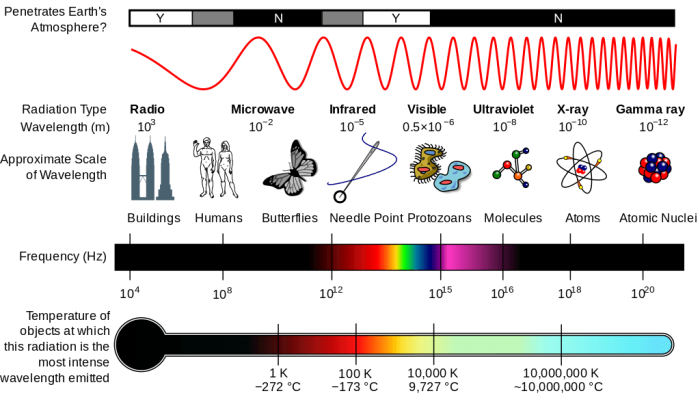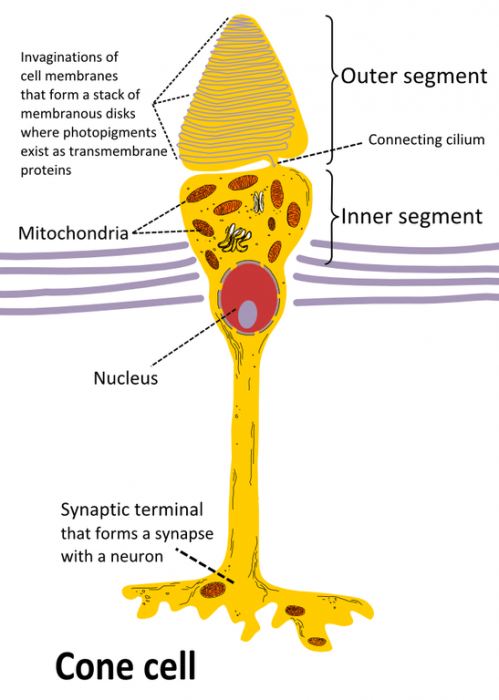What Color Is Made From Blue and Red

What color does red and blue make? You are probably thinking that the answer to this question is purple or violet, and that is true but it is only part of the answer. Combining red and blue together makes purple if you are talking about pigments, certain types of materials which can be combined together. However, if the discussion is centered around the visible light spectrum, then combining red and blue together creates the color magenta.
As far as the light spectrum goes, blue and red are primary colors on the spectrum. This means that the red and blue are manifestations of electromagnetic radiation visible to the human eye, and they can't be created by combining different colors together. This is the reason that digital paint programs use values given in the RGB (or red, green, blue) format.
Pigments don't get their colors by emitting certain electromagnetic wavelengths like light does. Instead, pigments receive their color by absorbing certain wavelengths of the spectrum. Due to this fact, when determining what colors are produced when mixing pigments together, the calculation is different. The primary colors in terms of pigments are yellow, magenta, and cyan. Magenta absorbs green light, yellow absorbs blue light, and cyan absorbs red light. Mixing blue and red pigments together will give you the color violet or purple.
How The Light Spectrum Works
Electromagnetic radiation can manifest itself in many different ways like visible light, microwaves, infrared radiation, ultraviolet radiation, and radio waves. The wavelengths of electromagnetic radiation that human eyes are capable of perceiving are what we refer to as light. Electromagnetic radiation has different wavelengths and frequencies it can travel or move at, and it can be transmitted by waves and particles. The electromagnetic spectrum is a representation of the wavelengths that the radiation is moving in. There are typically seven different categories of electromagnetic radiation, seven categories that make up the EM spectrum.

Shows parts of the EM spectrum along with different properties of the categories on the spectrum. Photo: By Inductiveload, NASA – self-made, information by NASABased off of File:EM Spectrum3-new.jpg by NASAThe butterfly icon is from the P icon set, File:P biology.svgThe humans are from the Pioneer plaque, File:Human.svgThe buildings are the Petronas towers and the Empire State Buildings, both from File:Skyscrapercompare.svg, CC BY-SA 3.0, https://commons.wikimedia.org/w/index.php?curid=2974242
These electromagnetic regions are usually ranked in order of decreasing wavelength and increasing energy frequency. From least energy frequency to most energy frequency these categories are: radio waves, microwaves, infrared, visible light, ultraviolet, x-rays, and gamma rays.
The temperature of an object and its color are correlated with one another. As objects grow hotter, the energy they release changes form, with shorter wavelengths becoming the primary form of emitted EM radiation. The change of wavelengths is frequently perceptible to the human eye, appearing as the change of color. One example of this phenomenon is how a blowtorch changes as the heat it releases changes. The flame of a blowtorch turns from red to blue as the flame becomes hotter, as the user adjusts its temperature. Heat energy can be converted into light energy, and this process of conversion is referred to as incandescence.
When the material grows hotter, the material begins to emit more vibration energy, and this increase in energy is seen as incandescent light. When the amount of energy given off by hot material climbs into the range of approximately 800°C or 1470°F, the object is in the infrared portion of the EM spectrum. As the temperature of the material increases beyond the infrared portion of the spectrum, the object begins to glow red as it moves into the visible portion of the spectrum. If the heat of the object continues to increase beyond this point, the object will gain a white-hot coloration and a blue coloration after that.
Because temperature and color are so strongly related, astronomers are capable of estimating the temperature of interstellar objects by examining the color of objects like stars. The light emitted by our solar system's sun is seen as either a whitish or yellowish light, and it has a wavelength of around 550 NM. The surface of the sun is approximately 5527°C or 9980° F or 5800° Kelvin. Stars such as the star Betelgeuse are cooler than the sun, and as such they give off a reddish glow. Betelgeuse is around 3000°C. Stars like the star Rigel are hotter than the sun, and at a temperature of approximately 12,000°C Rigel gives off a bluish light.
The light an object gives off can be analyzed by astronomers to learn about a lot more than just the heat of an object. Since every element on the periodic table absorbs different wavelengths of light, this can help astronomers infer the elemental composition of an interstellar object. The absorption spectrum refers to how different elements absorb different wavelengths of light. Analyzing the light emitted by an object and comparing it with the absorption spectrum lets astronomers determine what elements likely comprise objects such as stars, asteroids, dust clouds.
How The Eye Perceives Color
For humans, the most important aspect of the light spectrum is the color of an object. The color of an object manifests as a result of both the inherent properties of light itself and the way that the human eye perceives light. Objects don't actually possess color, rather objects appear to be a certain color because they either reflect or give off light that happens to be in a certain wavelength.

Photo: By Ivo Kruusamägi – Own work, CC BY-SA 3.0, https://commons.wikimedia.org/w/index.php?curid=54680466
The human eye perceives light through specialized light receptor cells. These cells are called cones and rods, with cones being the receptor cells capable of perceiving color. Rods take in only visible light and send that light to the brain, these are used for lowlight vision. The cone cells in the eye intercept light at certain wavelengths that correspond with color. The wavelengths of light that are around 740 NM are considered to be at the lower end of the spectrum, and they are interpreted as the color red. Light wavelengths in the middle portion of the spectrum are interpreted as green, and those that are around 380 NM are in the upper portion of the spectrum and they are seen as blue or violet. Other colors are simply just mixtures of these three primary colors.

Photo: By D-Kuru – Own work, CC BY-SA 3.0 at, https://commons.wikimedia.org/w/index.php?curid=7082370
For instance, the color magenta is made out of red and blue, while cyan is a mixture of green and blue, and yellow is made out of both red and green. When all three primary colors of light are mixed together the result is white light, while black is just the absence of light. Sir Isaac Newton was the individual who recorded the fact that white light is made out of the three visible spectrum colors. Newton found that the color spectrum was projected onto a nearby wall when he passed some light through a prism.
For the colors red and blue, red is seen at a wavelength of around 740 NM while blue is seen at a wavelength of approximately 470 NM.
Pigments
What has been discussed so far is the color that comes from the emitting of light, the visible portions of the electromagnetic spectrum. However, pigments don't work by adding light together, rather pigments work by trapping some frequencies of light and only letting certain wavelengths of light bounce off the object. Pigments operate by removing certain light frequencies from white light, and the colors that you see when you look at a pigment are simply the colors that have reflected off the object and entered your eye. This is referred to as subtractive color, and subtractive color is what is used to create paints and dyes. The paint or dye absorbs certain frequencies and reflects the other frequencies off of it, with the brain interpreting this reflected frequency as a certain color. When red and blue pigments are mixed together, the result is purple.
One of the most well-known pigments is chlorophyll, the pigment found in green plants. This pigment works by absorbing the blue and red parts of the visible spectrum, with the green light being reflected away. As a result of having chlorophyll within their cells, plants have green coloration.
There are other examples of biological pigments as well, such as: hemoglobin, melanin, carotenoids, anthocyanins, and polyene enolates.
Hemoglobin is a chemical responsible for providing the red coloration that blood cells have. Melanin is a type of pigment found within most organisms, and it is responsible for blocking ultraviolet radiation and shielding cells from this harmful radiation. Carotenoids are created by different kinds of bacteria, and an example of a carotenoid is carotene, which gives flamingos pink coloration and carrots orange coloration. Anthocyanins are a red or blue pigment found within the tissues of higher plants. Anthocyanins are water soluble. Polyene enolates are a type of pigment found only in certain kinds of parrots.
The colors that an object absorbs is determined by the structure of that object. The frequency of vibration of the object (the frequency that the electron are vibrating at), must be near or at the frequency of the light waves for it to absorb that color. When the frequency of the vibration matches the light waves, the electrons in the object absorb the incoming light and vibrate due to the energy. When the material's atoms hold tightly to their electrons, the vibrations are passed to the atom's nuclei. This makes the atoms speed up and collide with other atoms as a result. When the atoms collide they give off the energy they acquired earlier during the vibration process, releasing it as heat.
Source: https://sciencetrends.com/what-color-does-red-and-blue-make/
0 Response to "What Color Is Made From Blue and Red"
Post a Comment